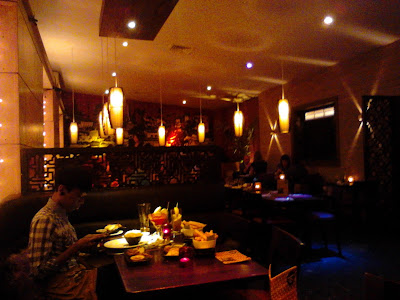
By Boeing: 2892 miles
By Boris Bike: 3.3 miles
Guzzling beakers of mulled wine over a crisp and cold Oxfordshire Christmas felt quintessentially English. An open fire, the queens speech and carols from Kings seemed unimpeachably patriotic. But the ability to assimilate foreign traditions and tastes and make them unmistakably homely has been an English trait for more generations than in takes a recessive ginger gene to reappear in an unsuspecting freckly youth. What could be more English than tea? Well, Bovril for starters. One of the key ingredients in the mulled wine was Cloves, an aromatic spice originating from Indonesia.
This collection of 6000 islands rudely coerced, presumably to save the bother of designing 6000 different flags, into nationhood has remained something of an unexplored mystery to most Brits. Bali, the paradise that recently shuddered with a tragic act of terrorism, is perhaps the most familiar, with Java and Sumatra also chiming a few bells in most of us. It is paradise, sure, but so is Southend on Sea on a balmy day and the Costa Del Sol, well that is patch of sand which dreams are made on.
With so many faces and facets you would expect a vast array of flavours. Throw in a mercantile history and influences from the Middle East, China, Portugal and the Netherlands and you can anticipate a menu as intriguing as a Methodist on a stag-do.

Having eaten at a slightly apologetic Combodian canteen I decided to take a different tack on this far eastern escapade. Afterall, if most of us set off for the Far East we do so for the holiday of a lifetime, wanting to see what we have never seen and feel what we have never felt. Sitting in an empty restaurant at a flimsy table doesn’t quite recreate that. But the Satay Bar was more like it, a low-lit cocktail lounge-cum-restaurant that was brash and bustling even on a Monday night. The music was loud, the conversation animated and the decor was striking and sensual. On the far wall was an emormous Manga style fresco cartoon depicting a stylised Indonesian city at sunset. Opposite that was a bright red illuminated freeze of an ancient deity, smiling indecently.

I was shown to a table and presented with the cocktail list and menu. The noise was similar to a busy pub or a shopping mall in the sales. Brixton is hardly the least boisterous suburb but nevertheless this was a place people went principally for a good time, and enjoyed some food while they were there. My choice for a starter was simple; Chicken Satay. The peanut based sauce is its most famous export and can even be bought as a make your own freezer kit from Iceland. Though to be honest the flavour of freeze dried reconstituted battery chicken takes some masking, and Satay is perhaps one of the few sauces strong and tasty enough to take on the challenge.
Fearing the morning reprisals of a Cocktail and not wishing to detract from the flavours I opted for water and tucked into the Satay. There is something very satisfying about plunging into a thick, aromatic sauce and then gnawing chicken off a stick. In fact were it offered in buffet form I’m not sure I’d stop indulging before forty. Though peanuts are one of the dominant ingredients in the country they are not native, being introduced by the Portuguese from Mexico in the 16th century. I think it is fair to say that they soon acquired the taste.
For the main course I had more difficult choice. The dishes in Eastern Indonesia share many similarities with Polynesian cuisine, while other islands have influences from China. An Indonesian dish I had always considered to be Malaysian is beef Rendang, a rich beef dish in a spicy coconut milk curry. I had read about a Balinese dish called Bebek Betutu that is a duck stuffed with spice , wrapped in banana leaves and cooked in embers in a pit. Unfortunately this did not feature on the menu. Neither was there buffalo, a popular dish in West Sumatra, or the Batak dish of Dog sansang.
Though tempted by national dish Nasi Goreng, a stir fry, I opted for something a little braver, a sambal. This is a paste made largely from ground chillis. A few forkfuls in and I began to think it was a little too brave but it was flavour I was after and there can’t be many less mild dishes in Asia.
Disappointingly after this assault of flavour the pudding menu consisted of a fudge cake or a heated banana, or at least that was my reading of it. As neither seemed particularly authentic I ordered a beer.
Indonesia is exotic by world standards and Brixton is exotic by London standards so perhaps the two are singing to the same hymn sheet. Although I doubt the Satay Bar has lured the boroughs traditional residents from their beef patties, jerk chicken and salted fish. But London evolves and tastes change. In ten years time there may be a Michelin starred Bajan restaurant in Mayfair.
Indonesian is an exotic alternative to Chinese or Thai, offering a little more variety and some unfamiliar dishes to explore. It is surprising then that there are only a handful in London. But as 2010 was the year of Korean food in London, and 2011 Vietnamese, Indonesian could be the next to fill vacant lots across the capital.




